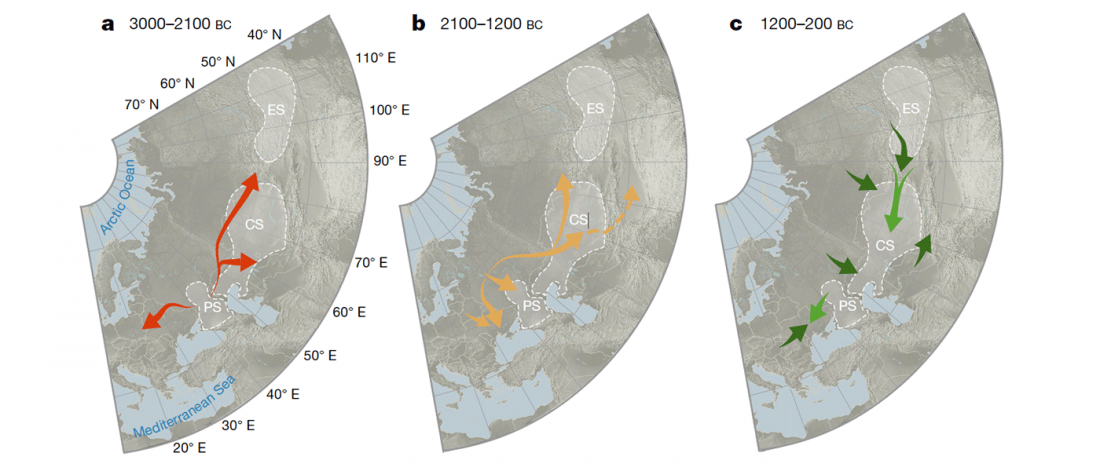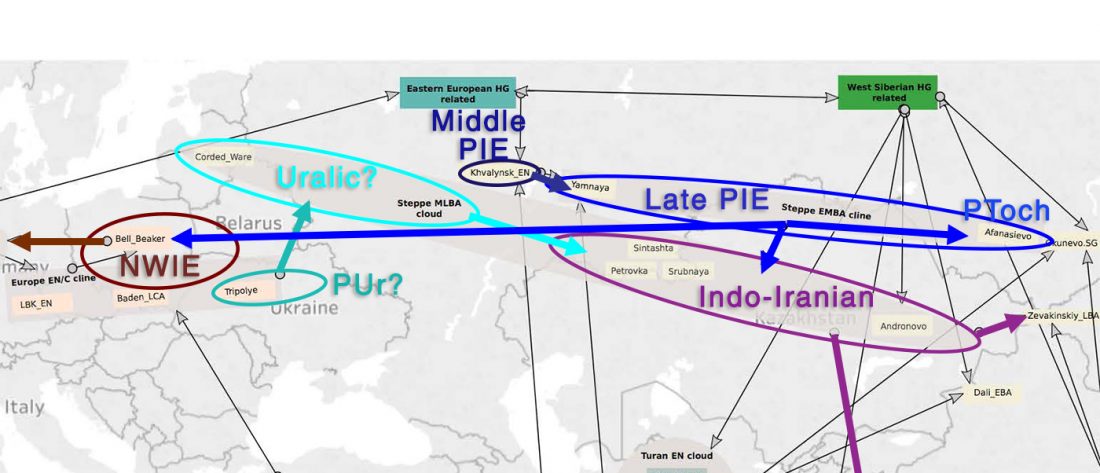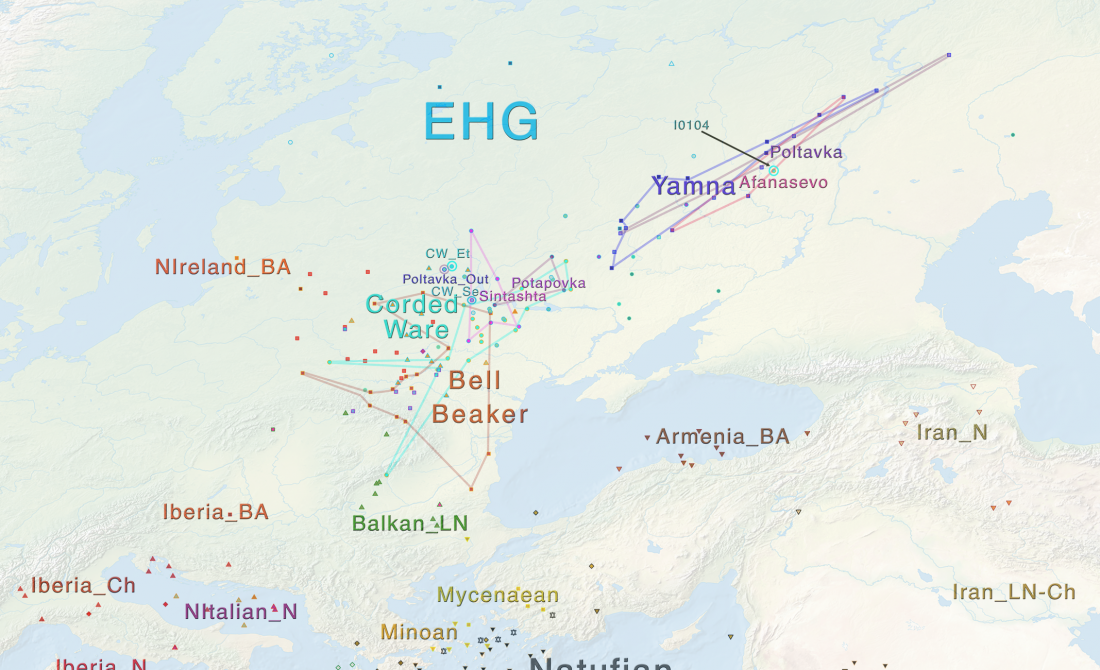The expected study of Eurasian samples is out (behind paywall): 137 ancient human genomes from across the Eurasian steppes, by de Barros Damgaard et al. Nature (2018).
Dicussion (emphasis mine):
… Read the rest “Eurasian steppe dominated by Iranian peoples, Indo-Iranian expanded from East Yamna”Our findings fit well with current insights from the historical linguistics of this region (Supplementary Information section 2). The steppes were probably largely Iranian-speaking in the first and second millennia bc. This is supported by the split of the Indo-Iranian linguistic branch into Iranian and Indian33, the distribution of the Iranian languages, and the preservation of Old Iranian loanwords in Tocharian34. The wide distribution of



